Popular games published by company Gremlin Industries
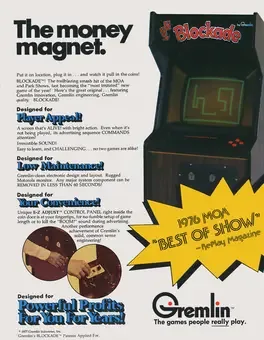
Blockade is a black and white arcade game developed and published by Gremlin in October 1976. Using four directional buttons, each player moves their character around leaving a solid line behind them, turning at 90 degree angles. To win, a player must last longer than the opponent before hitting something, with the first person to hit something losing. The game ends after one player gains six wins. Blockade is the first of what have become known as snake games.
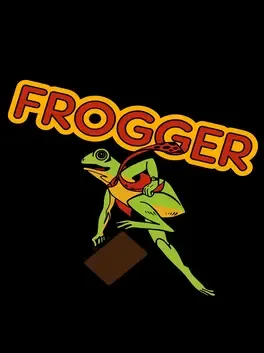
The object of the game is to direct frogs to their homes one by one. To do this, each frog must avoid cars while crossing a busy road and navigate a river full of hazards. Skillful players may obtain some bonuses along the way.

Blasto is a 1978 arcade game by Gremlin. The player controls a spaceship and must maneuver it through a mine field. The player tries to beat the clock to destroy all the mines.
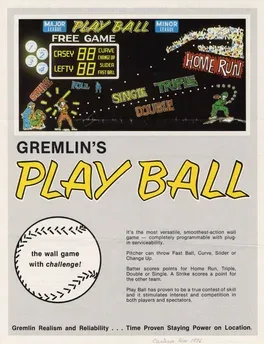
Play Ball was produced by Gremlin in 1972. From flyer: "It's the most versatile, smoothest-action wall game - completely programmable with plug-in serviceability. Pitcher can throw Fast Ball, Curve, Slider or Change Up. Better scores points for Home Run, Triple, Double or Single. A Strike scores a point for the other team. Play Ball has proven to be a true contest of skill and it simulates interest and competition in both players and spectators. "
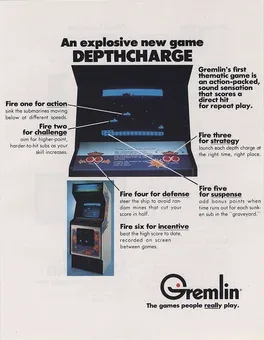
Depthcharge is a single-player arcade game released in 1977 by Gremlin Industries for the Sega VIC Dual system board. The game presents the player with a cut-away view of a section of ocean, on the surface of which is a destroyer with submarines passing beneath it. The player drops depth charges (up to six at a time) to destroy the submarines and moves the ship back and forth in order to avoid the submarines' mines. Up to four submarines may be present at any given time, each of which bears a score for destroying it that increases with its depth. The game was imported and released in several versions by Japanese publishers. Esco Trading released the game as Detphcharge, Taito as Sub Hunter, Sega as Depthbomb and in two versions by Data East - first as Submarine and then as Battleship in a two-in-one cabinet.
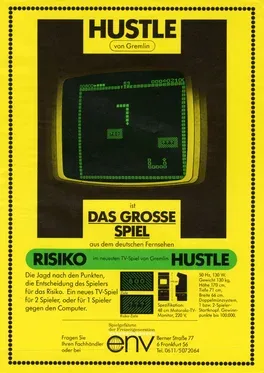
Hustle is a 1977 game by Gremlin on Blockade hardware that is effectively Snake except that the normal pellets are replaced with larger pieces containing various point values that you get if you touch the piece before it disappears. Multiple pieces may also appear at once. You have one life; the game ends either when you hit yourself/a boundary or run out of time (the operator is presumably able to change how much time you can play for).
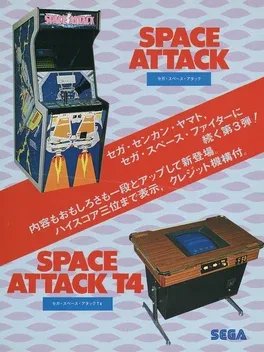
Space Attack is an arcade shooting game, released by Sega for VIC Dual hardware in 1979. In the US it is thought to have been renamed Super Space Attack - whether there are in fact two separate games is currently unknown, but the two are extremely similar and "Super" is often dropped in internal Super Space Attack documents. It's a Space Invaders clone and is almost identical to Taito's classic. It is completely identical to another VIC Dual Space Invaders clone, Alpha Fighter, sharing full color graphics and a "bonus" round (in which the saucer briefly descends from the top of the screen after clearing the rest of usual set of invaders). Space Attack has a different set of graphics to Alpha Fighter, however. Similar to versions of Space Invaders, the upright cabinets for Space Attack use a mirror to project the image onto a textured surface (in this case, a starfield), giving the illusion that there is a background while playing.
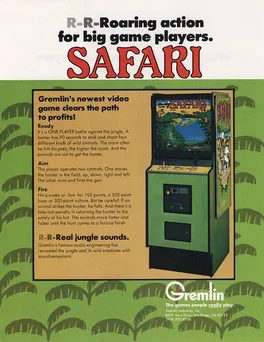
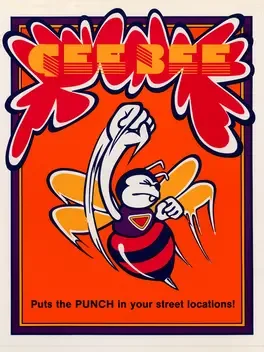
Namco's first independently designed video arcade game, Gee Bee combines gameplay elements of pinball and Breakout. There are two paddles, one at the bottom and one in the middle, that stay aligned when moving, so players must pay attention to both when bouncing the ball. There are blocks at the top, sides. and in two tiny compartments on the sides near the bottom. There is also a third, stationary, vertically-oriented paddle in the middle, as well as bumpers to give it a pinball feel. Scoring depends on what objects you hit. This was the first of three similar games designed and developed by Toru Iwatani, the creator of Pac-Man.
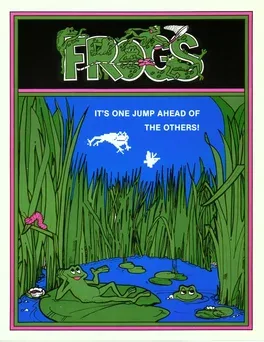
Frogs is a single-player action / platform arcade game released by Sega-Gremlin in 1978. It is the first video game with a jumping character (predating Donkey Kong by 3 years), which by some definitions could make it the first platform game. The player controls a frog on lily pads and attempts to catch (with the frog's tongue and while jumping) various insects (butterflies and dragonflies) worth different amounts of points in a set amount of time. Frogs is one of the first arcade games to include a static background as part of the arcade cabinet.[citation needed] The game’s graphics are "projected" by laying the monitor flat on its back and reflecting the computer-generated graphics of the frogs and flies toward the player via a mirror at a 45-degree angle. (The game’s graphics were actually generated and shown backward, so the mirror reflection would show letters and numbers properly.)